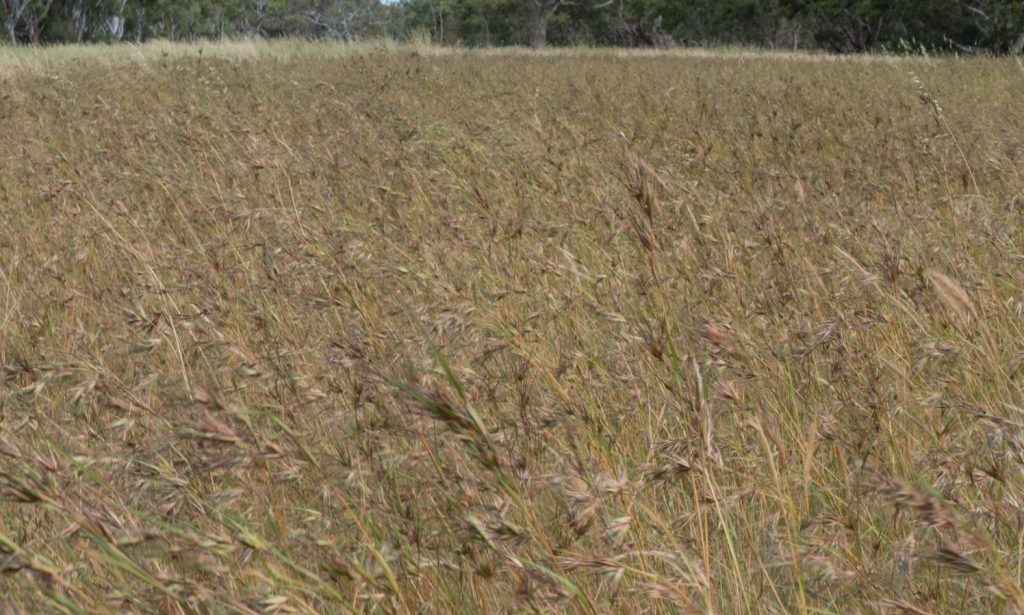Finding the forgotten grasslands of South East SA
When you think of pre-European vegetation in south-east SA, what do you see?
An old Red Gum standing guard over a waterhole, a carpet of flowers and sedges spreading from its feet? Brown Stringybarks twisting toward the sky from heathy sandhills? Or a dense landscape of Tea-tree swamps, impossible to cross?
How about an expanse of of “luxuriant grass” stretching into the distance, “studded with trees like a nobleman’s park”?
That’s how the early explorer and artist George Angas described the land south-east of Mount Gambier, between Mount Schank and the mouth of Glenelg River (in Nelson, Victoria), after his early European party journeyed from Rivoli Bay in the 1840s. Numerous other accounts from around the South East (including others from Angas) describe many areas as being covered by extensive carpets of grass, often with scattered trees or shrubs. Even the surroundings of the lakes of Mount Gambier were described as mostly grassy and lightly timbered.

A RAPIDLY-ALTERED LANDSCAPE
On the arrival of Europeans, grasslands and open grassy woodlands were amongst the most productive landscapes, with the added appeal of being ready to graze without clearing – just add stock! Kangaroo Grass (Themeda triandra) was hit hard in these early days – being tall and palatable, it rapidly disappeared under intense grazing. Grazing was mainly of native pastures until roughly the 1940s, when Superphosphate was added, allowing paddocks to be sown with introduced pasture grasses.
Many of the remaining grasslands went under roads, tracks and buildings, and surviving grasslands had to contend with ploughed firebreaks, weed invasions and the disappearance of burning by Traditional Owners, which led to build-up of dead grass material and choked out the tussocks.
The rarity of grassland has led to a threatened status for many associated species, including fauna such as the Striped Legless Lizard (Delma impar) and the Eastern Barred Bandicoot (Perameles gunnii – now extinct in the SE), and diverse flora including the now-threatened species Large-headed Groundsel (Senecio macrocarpus), Clover Glycine (Glyceria latrobeana) and numerous native orchids.
Despite all these pressures, some good patches of native grassland still survive, albeit rare and mostly found in protected areas such as national parks, railway reserves, roadsides, and sometimes in lesser used paddocks or difficult to reach areas on private land.
EARLY SUMMER IS GRASSLAND TIME
Most of the year, native grasslands can be hard to see, but they often become more obvious in late spring and early summer, with bristly carpets of Wallaby Grass (Rytidosperma spp.), wispy or spiky heads of Spear-Grass (Austrostipa spp.), elegant curving stems of Weeping Grass (Microlaena stipoides), or the red wash of Kangaroo Grass in December as it ripens in the sun. A diverse area of grassland can include all of these, and between the tussocks you might find native orchids, lilies and daisies, amongst others.

TAKING STOCK
Early in the year, Bryan and I were out on the road in the lower South East assessing known Kangaroo Grass remnants and checking whether some older records still survive. This small project has been supported by funding by OneFortyOne, allowing us to sketch out a project plan and perform some verification of older records as well as rapid assessments. In early December, we headed out to set up detailed monitoring transects on some of these grasslands, recording grassland species and cover and noting management issues. Some of the objectives include improving grassland protection, talking with landholders or neighbours to understand their slashing needs and timing, and noting some areas where burning could be incorporated to freshen up tussocks and stimulate the recruitment of native seedlings.
TELL US ABOUT GRASSLANDS
Grasslands are good at hiding! The first step in protecting these areas from further decline is to locate them, so if you know any good patches of native grassland – or any with potential that need attention or protection – in the South East of SA, please send a message to
This important biodiversity work is proudly supported by:

